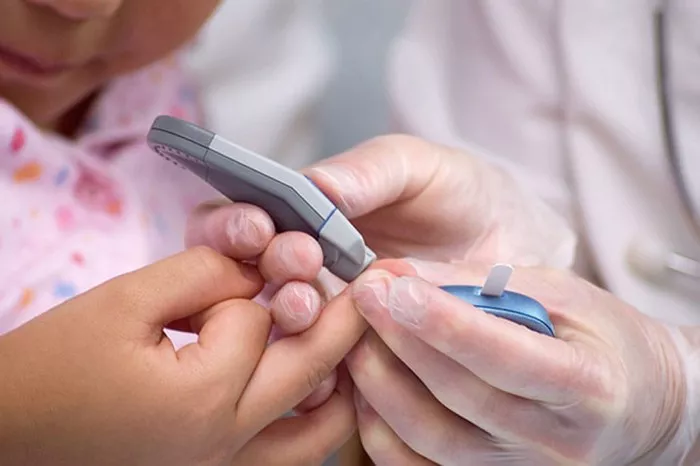Fasting blood sugar (FBS) is one of the most fundamental measures of glucose metabolism. It plays an essential role in diagnosing and managing diabetes, as well as understanding an individual’s risk for developing the condition. In this article, we will explore the normal range of fasting blood sugar, how it is measured, and why it is such an important parameter in both clinical practice and self-management for people with diabetes.
What is Fasting Blood Sugar?
Fasting blood sugar refers to the concentration of glucose (sugar) in the blood after a period of fasting, usually 8 to 12 hours overnight. This test is typically conducted in the morning before any food or beverages have been consumed, with the idea that fasting eliminates the short-term effects of food intake on blood sugar levels.
Fasting blood sugar (FBS) levels offer crucial insights into how well the body is able to regulate blood glucose. This regulation is primarily the responsibility of the pancreas, which releases insulin, a hormone that helps cells absorb glucose from the bloodstream. When the body is unable to effectively manage blood sugar levels—whether due to insufficient insulin production, insulin resistance, or both—higher or lower levels of FBS can result.
The Normal Range of Fasting Blood Sugar
The exact definition of what constitutes a “normal” FBS level can vary slightly depending on the guidelines used, but broadly speaking, the following range is accepted:
Normal Range: 70 to 99 mg/dL (3.9 to 5.5 mmol/L)
Impaired Fasting Glucose (IFG): 100 to 125 mg/dL (5.6 to 6.9 mmol/L)
Diabetes: 126 mg/dL (7.0 mmol/L) or higher
Let’s break down these categories:
Normal Fasting Blood Sugar (70-99 mg/dL or 3.9-5.5 mmol/L): A normal FBS level suggests that the body is efficiently processing glucose and that insulin sensitivity is functioning optimally. Individuals within this range are typically at a lower risk for developing diabetes. However, a single normal reading should not be interpreted as an absolute guarantee of long-term health, as other factors such as diet, exercise, and genetics still play crucial roles.
Impaired Fasting Glucose (100-125 mg/dL or 5.6-6.9 mmol/L): IFG is often considered a prediabetic condition, indicating that blood glucose levels are elevated beyond the normal range but not yet high enough to meet the diagnostic criteria for diabetes. People with IFG may have an increased risk of developing type 2 diabetes, heart disease, and stroke. This stage presents a critical window for intervention. Lifestyle modifications such as improved diet, increased physical activity, and weight loss can significantly reduce the risk of progressing to full-blown diabetes.
Diabetes (126 mg/dL or 7.0 mmol/L or higher): A fasting blood sugar level of 126 mg/dL or higher typically indicates that the person has diabetes. At this point, the body is unable to regulate glucose properly, either due to insulin resistance (as in type 2 diabetes) or insufficient insulin production (as in type 1 diabetes). At these elevated levels, long-term complications of diabetes, including cardiovascular disease, kidney damage, and nerve problems, become a significant concern.
Why Monitoring Fasting Blood Sugar is Important
Blood glucose regulation is a delicate and complex process involving hormones, enzymes, and feedback systems. Fasting blood sugar is an important diagnostic tool because it reflects the body’s ability to maintain glucose balance after a period of rest (fasting). Here’s why FBS monitoring is so crucial:
Early Detection of Diabetes and Prediabetes: High FBS levels are one of the most reliable indicators of prediabetes and diabetes. By measuring FBS regularly, healthcare providers can identify individuals who are at risk before the disease progresses. Early diagnosis can lead to early intervention, which significantly reduces the likelihood of developing diabetes-related complications.
Guiding Treatment Decisions: For individuals already diagnosed with diabetes, monitoring FBS helps assess how well their management strategies are working. Consistent and well-controlled FBS levels are associated with a reduced risk of long-term complications, such as neuropathy, retinopathy, and cardiovascular disease. If FBS remains consistently elevated, adjustments to medications, insulin therapy, or lifestyle interventions may be necessary.
Predicting Risk for Other Health Conditions: Elevated FBS levels can also serve as a risk marker for other health conditions such as heart disease and stroke. Insulin resistance, which often accompanies higher blood sugar levels, is strongly linked with increased risk for these conditions. Thus, maintaining a normal FBS is beneficial not only for preventing diabetes but also for reducing the risk of cardiovascular events.
Understanding Insulin Sensitivity: The ability of the body to manage blood glucose is influenced by insulin sensitivity, or how effectively the body’s cells respond to insulin. A normal FBS indicates good insulin sensitivity, while an elevated FBS may be a sign of insulin resistance, where the body’s cells become less responsive to insulin. Over time, this can lead to higher blood glucose levels and eventually diabetes. Regularly monitoring FBS can help individuals track their insulin sensitivity and make lifestyle adjustments before reaching a critical threshold.
Factors Affecting Fasting Blood Sugar Levels
While the standard measurement of FBS is taken after 8-12 hours of fasting, several factors can influence the accuracy and interpretation of this test:
Diet: Diet plays a pivotal role in influencing FBS. Consuming high amounts of sugar, refined carbohydrates, or unhealthy fats before the fasting period can temporarily raise blood sugar levels. On the other hand, following a balanced diet rich in fiber, lean protein, and healthy fats can help maintain stable blood glucose levels.
Exercise: Physical activity enhances insulin sensitivity and helps regulate blood sugar. Therefore, individuals who engage in regular exercise are likely to have better blood glucose control and may have lower FBS readings. However, vigorous exercise immediately before the fasting period can sometimes cause temporary fluctuations in blood sugar levels due to hormonal changes.
Stress: Chronic stress can elevate blood glucose levels by increasing the production of stress hormones like cortisol and adrenaline. This can make it more difficult for the body to regulate blood sugar effectively, leading to an elevated FBS. It is important to consider a person’s stress levels when interpreting blood sugar results.
Medications: Certain medications can influence FBS readings. For example, corticosteroids, diuretics, and some blood pressure medications can increase blood sugar levels. On the other hand, drugs used to treat diabetes, such as insulin or oral hypoglycemics, can lower FBS. Always inform your healthcare provider about any medications you are taking, as this can affect interpretation of results.
Health Conditions: Various underlying health conditions can influence fasting blood glucose. Conditions such as polycystic ovary syndrome (PCOS), obesity, and sleep apnea are linked to insulin resistance and elevated FBS. Additionally, acute illnesses or infections can temporarily elevate blood sugar levels due to stress hormones released during illness.
Age: As individuals age, they may experience a decline in insulin sensitivity, which could result in higher FBS levels. This is a contributing factor to the increasing incidence of type 2 diabetes in older populations. Regular screening is essential for elderly individuals to detect early signs of abnormal blood sugar regulation.
The Role of FBS in Diabetes Diagnosis and Management
Fasting blood sugar is a cornerstone of diabetes diagnosis. However, it is not the only test used to evaluate an individual’s blood glucose levels. Other important tests include:
Oral Glucose Tolerance Test (OGTT): This test involves drinking a glucose solution and measuring blood glucose levels at specific intervals afterward. It is often used to diagnose type 2 diabetes or gestational diabetes and is more sensitive than fasting blood sugar alone.
Hemoglobin A1c (HbA1c): The HbA1c test measures the average blood glucose level over the past 2-3 months. It is a crucial tool for assessing long-term blood sugar control in people with diabetes. An HbA1c of 6.5% or higher is typically indicative of diabetes.
Random Blood Sugar Test: This test measures blood sugar levels at any time of the day, regardless of fasting status. A random blood sugar level of 200 mg/dL (11.1 mmol/L) or higher, along with symptoms of diabetes, can indicate the presence of the condition.
Conclusion: Importance of Fasting Blood Sugar Monitoring
Maintaining normal fasting blood sugar levels is essential for preventing the development of diabetes and managing the condition in those who are already diagnosed. Regular monitoring of FBS provides valuable insights into an individual’s glucose metabolism and helps identify early signs of abnormal glucose regulation.
A normal FBS level is an indication that the body is efficiently handling blood glucose, while elevated FBS levels may signal a risk for developing prediabetes or diabetes. For individuals with diabetes, consistently high FBS readings can suggest poor disease management and an increased risk of complications. With appropriate lifestyle changes, medication, and regular monitoring, it is possible to control FBS levels and reduce the risk of long-term diabetes-related health issues.
In summary, fasting blood sugar remains one of the most important metrics for understanding an individual’s metabolic health. Regular screening, healthy lifestyle choices, and effective management are the key to maintaining normal FBS levels and supporting overall well-being.
Related topics:
How to Effectively Monitor Blood Sugar



























